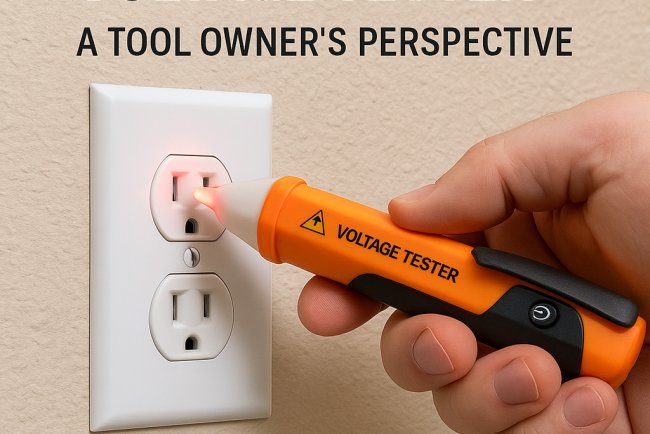Top Signs of Dangerous Electrical Wiring That Need Immediate Attention
Learn the top signs of dangerous electrical wiring, why they matter, and what steps to take to keep your home safe and hazard-free

Electrical wiring is the skeleton constituted in any residence or building; the wiring therefore enables the functioning of the lights and appliances, etc., for heating and cooling systems, and the answer to endless questions about the installation. With time, wiring might deteriorate, get damaged, or be installed incorrectly, thus posing very adverse and even fatal risks like electrocution, power outages, and in worse cases, fires. At Uselectricaltools.com, safety comes first and understanding the signs of faulty wiring is one way to ensure that one acts long before disaster strikes.
Therefore, here are the most crucial signs that indicate dangerous levels of shock wiring requiring immediate repairs:
1. Your Circuit Breaker Keeps Tripping
A tripped circuit breaker every now and then is normal—it’s just doing its job to prevent overload. But if your breaker trips often or for no clear reason, something’s not right.
This could mean:
-
Your circuits are overloaded
-
There’s a short circuit somewhere
-
The wiring is damaged or faulty
Don’t keep flipping the switch back on without checking the cause. Ignoring it could lead to overheating, melted wires, or even a fire.
2. Flickering or Dimming Lights
Notice your lights flicker or dim when you use a major appliance? That’s a sign your wiring may be struggling to handle the electrical load.
You might be dealing with:
-
Loose wire connections
-
Overloaded circuits
-
Faulty switches or fixtures
It’s more than just annoying—it can be a sign of a deeper problem that needs a licensed electrician’s attention.
3. Burning Smell or Discoloration Around Outlets
A burnt smell near an outlet or switch is a major red flag. Also look out for:
-
Yellow or brown discoloration on wall plates
-
Melted plastic or scorch marks
These are signs that wires might be overheating. Shut off the power to that outlet immediately and get it checked out before it turns into a fire hazard.
4. Warm or Vibrating Outlets and Switches
Outlets and light switches should feel cool to the touch. If they feel warm or seem to vibrate, it’s not normal.
Possible causes:
-
Loose or deteriorating wires
-
Overloaded circuits
-
Improper installation
This can lead to sparks or electrical fires if ignored. Don’t wait—get it looked at as soon as possible.
5. Buzzing or Crackling Sounds
Electricity should be silent. So if you hear buzzing, popping, or crackling sounds coming from walls, outlets, or switches, that’s a clear warning.
This could mean:
-
Wires are arcing (electricity jumping gaps)
-
Corroded or loose connections
-
Damaged insulation
These issues can lead to fires and should be fixed right away. Shut off the power and call a pro.
6. Outdated or Aluminum Wiring
Older homes (especially those built before the 1980s) might have aluminum wiring instead of copper. Aluminum wiring is more prone to corrosion, loose connections, and overheating.
Other outdated systems include:
-
Knob-and-tube wiring
-
Ungrounded outlets
If your home has old wiring, it’s time to consider a full upgrade. Modern wiring is much safer and more reliable.
7. Sparks When Plugging Something In
A small spark might not seem like a big deal—but if it happens frequently or the spark is large, that’s a problem.
It may indicate:
-
A short circuit
-
Loose or worn-out wiring
-
A faulty outlet
This can damage your devices or start a fire. Stop using that outlet until it's been inspected.
8. Signs of Rodents Chewing Wires
Rodents are more than just a nuisance—they love to chew through wiring, which can expose bare wires and increase the risk of electrical fires.
Watch for:
-
Chewed wires or cable jackets
-
Droppings near outlets or in the attic
-
Nests near your breaker panel
If you suspect rodent activity, act quickly to repair damage and seal entry points to prevent future problems.
9. Shocks When Touching Switches or Outlets
Getting a mild shock when you touch a switch or plug something in? That’s not normal. Even a small shock could mean:
-
Exposed wiring
-
Improper grounding
-
Internal outlet damage
These shocks can escalate to something more serious. It’s best to shut off power and get it checked immediately.
What Should You Do If You Notice These Signs?
If any of these warning signs sound familiar, don’t take chances. Here’s what you should do:
-
Turn off the power to the affected area using your breaker panel.
-
Avoid using the outlet, switch, or appliance until it’s been checked.
-
Call a licensed electrician to diagnose and repair the issue safely.
-
Document what you see—photos and notes can be useful for repairs or insurance claims.














